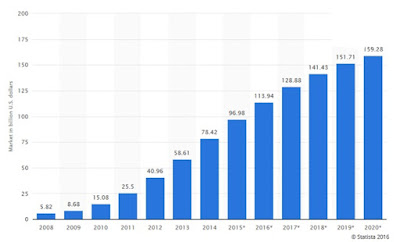Twitter Feed
What has NIST done for me lately?
According to a study, 82 percent of federal IT professional respondents reported that they were using the NIST (National Institute of Standards and Technology) cybersecurity framework to improve their security…
Future Ready in the API economy
The world of business is software. No matter the industry vertical or business model, effective software is the key to business success. An even more important aspect of this reality…
Teradata: Embrace the Power of PaaS
Platform-as-a-Service (PaaS) has always been the unappreciated sibling of the cloud computing service model trio. Existing in the dark shadow of the most widely adopted Software-as-a-Service (SaaS) and foundationally powerful…
Why cloud changes everything
How is cloud computing bringing society and its ideas closer together? This got me thinking. Last week the President of the United States started following me on Twitter. Now I…
The future of data security: An interview with Dell Fellow Tim Brown
The Dell Fellows program recognizes engineers for their outstanding and sustained technical achievements, engineering contributions and advancement of the industry. They are also seen as top innovators that have distinguished…
Hybrid IT Governance: Automation is Key
As cloud computing continues to grow in importance, enterprises are now facing a new realization. In their almost rampant embrace of cost savings associated with public cloud, many are just…
Endpoint device management: Protecting the enterprise front door
Mobility and cloud computing have combined to obliterate any so-called network security perimeter. Corporate data has now been let loose to roam in a world of cyber thieves, manipulators and…
20 hybrid cloud insights from top industry experts
One cloud does not fit all organizations. That’s true whether it is a public or private cloud. A hybrid cloud option allows your business to create a custom solution that…
Security requires long haul planning
On Tuesday, October 6th, the European Court of Justice (ECJ), invalidated the U.S./EU Safe Harbor Framework. This framework, in place since 2000, gave blanket permission to data transfers from the…
Cybersecurity through enterprise risk management
Cybersecurity is top of mind for corporations around the world. The quantity of recent data breaches and the dollar loss associated with some of them indicates either an underinvestment in…
- Enable cloud service arbitrage based on cost, performance or operational need;
- Help companies migrate operations to the cloud and assist with staff augmentation and training;
- Provide cloud service auditing and SLA monitoring services;
- Help in focusing and managing organizational cloud service demand;
- Provided toolsets to assist in the migration and integration of enterprise applications; and
- Help in change management and the selection and integration of other managed services.
By automating and operationalizing the governance of cloud services, CSBs can efficiently multi-source services and augment them with third party metering and monitoring. Using CSBs, organizations also accelerate their transition to hybrid IT models. This marketplace is typically segmented type of services: cloud brokerage and cloud brokerage enablement, wherein cloud brokerage enablement is further segmented into internal and external brokers. When used internally, cloud enablement platforms helps enterprises adopt the new hybrid IT and multi-sourced operating model. By building organic expertise, companies can personalize IT service consumption and unify
IT service delivery through the use of a corporate self-service store, a dynamic service marketplace, and continuous delivery. This centralized, supply chain approach unifies the order, execution, and management of multi-sourced solutions across legacy and cloud resources, by centrally delegating and tracking execution.
(This post was brought to you by IBM Global Technology Services. For more content like this, visit Point B and Beyond.)
( Thank you. If you enjoyed this article, get free updates by email or RSS – © Copyright Kevin L. Jackson 2016)
Cloud Computing
- CPUcoin Expands CPU/GPU Power Sharing with Cudo Ventures Enterprise Network Partnership
- CPUcoin Expands CPU/GPU Power Sharing with Cudo Ventures Enterprise Network Partnership
- Route1 Announces Q2 2019 Financial Results
- CPUcoin Expands CPU/GPU Power Sharing with Cudo Ventures Enterprise Network Partnership
- ChannelAdvisor to Present at the D.A. Davidson 18th Annual Technology Conference
Cybersecurity
- Route1 Announces Q2 2019 Financial Results
- FIRST US BANCSHARES, INC. DECLARES CASH DIVIDEND
- Business Continuity Management Planning Solution Market is Expected to Grow ~ US$ 1.6 Bn by the end of 2029 - PMR
- Atos delivers Quantum-Learning-as-a-Service to Xofia to enable artificial intelligence solutions
- New Ares IoT Botnet discovered on Android OS based Set-Top Boxes



